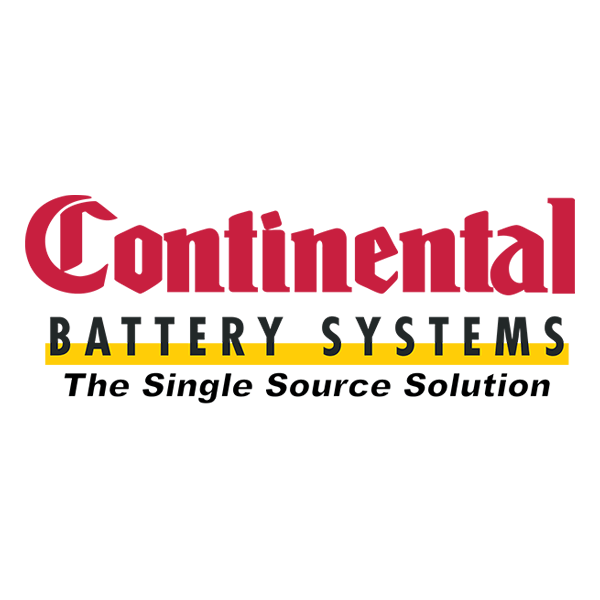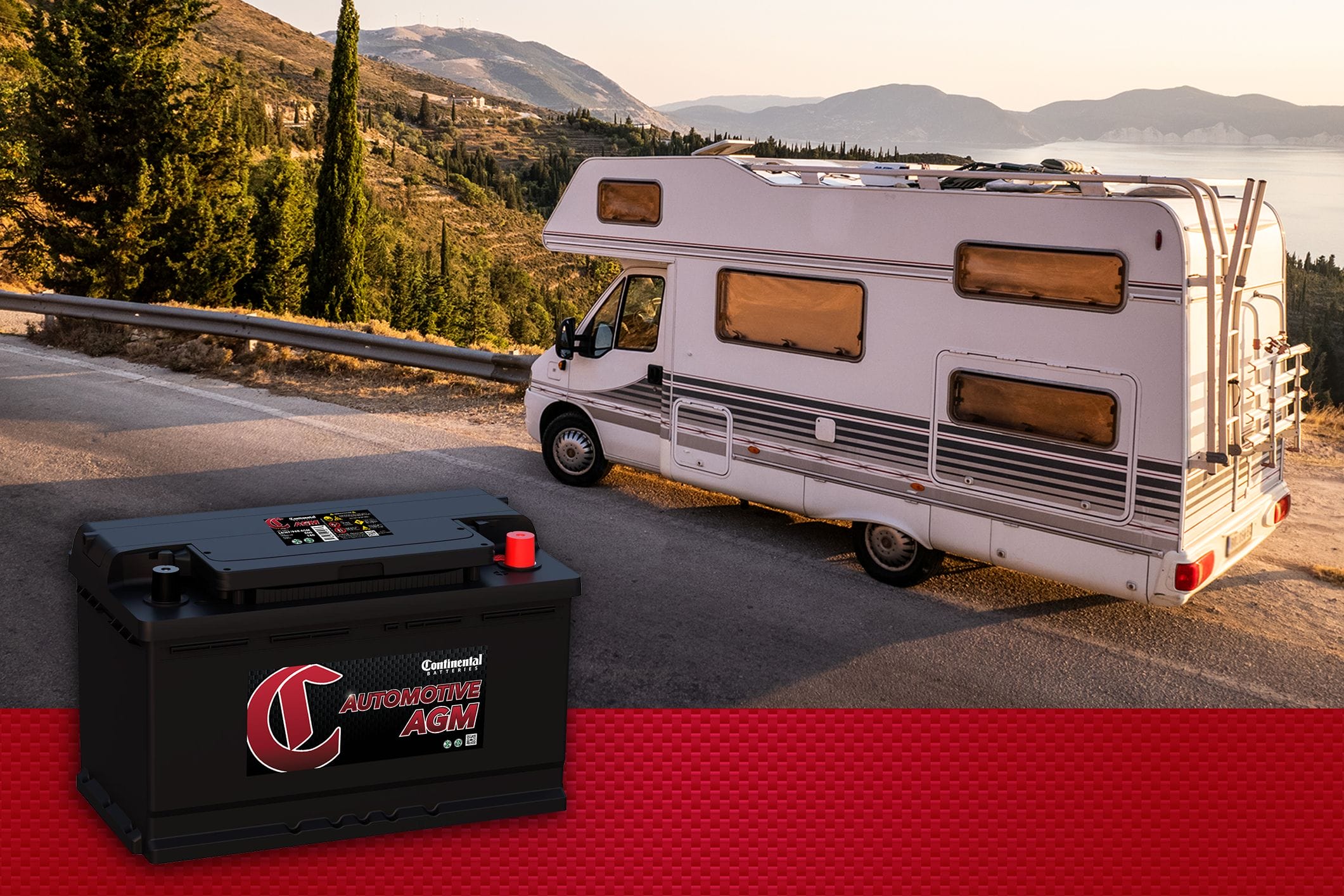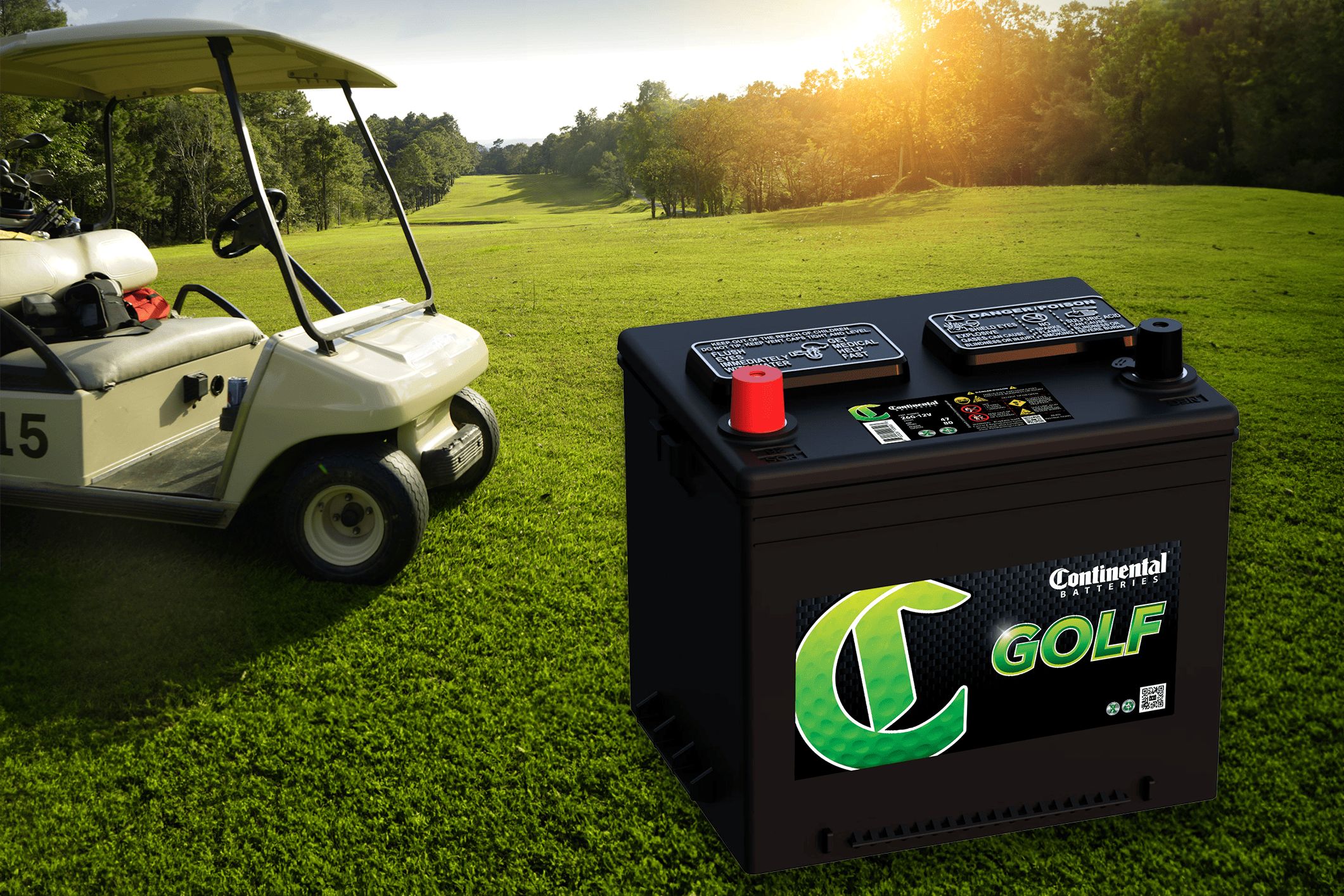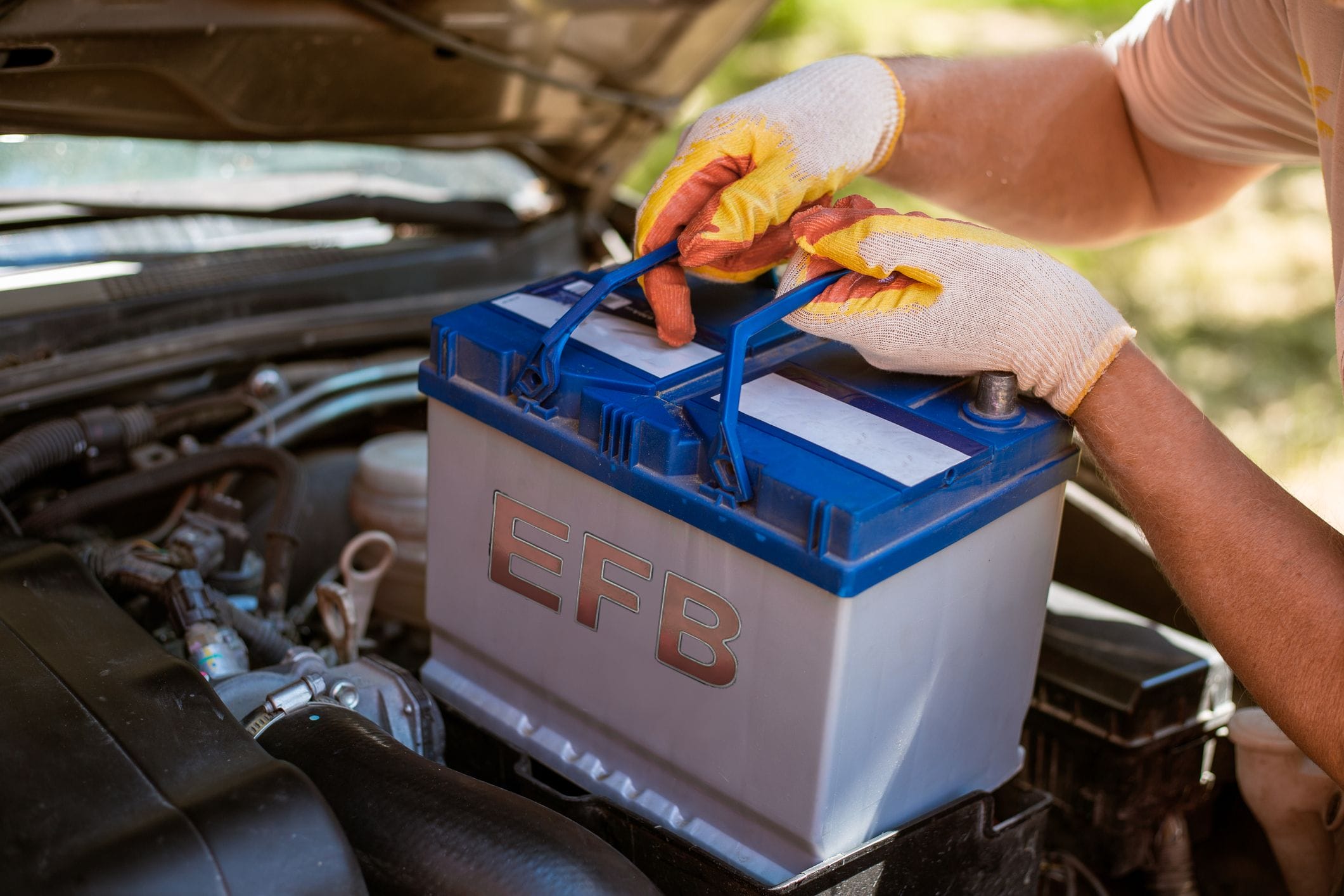
Welcome to your ultimate guide to RV batteries. Whether you have a fleet of RVs ready to head out on the road or you supply batteries to power all those months of recreational fun, you know how important it is to have reliable and long-lasting power for your customers’ home on wheels.
In this guide, we will go over everything you need to know about RV batteries, including types, common signs of failure and the best maintenance practices to extend the lifespan of your RV batteries.
What Are RV Batteries?
What makes a battery an RV battery? Simply put, an RV battery is the power source for all the electrical systems in a recreational vehicle (RV). There are typically two types of batteries in drivable RVs:
- Starting batteries (also called chassis batteries). This is the battery that starts the engine of the RV and provides power to the lights and other electrical systems while the vehicle is running. These batteries are similar to car batteries but are designed to be more durable and provide a steady flow of power over a longer period.
- House batteries (deep-cycle batteries) are used to power the appliances and other electrical systems while the RV is not connected to shore power. They are typically connected in parallel to increase capacity.
Types of RV Batteries
The three most common types of house batteries available today are flooded lead-acid (FLA), absorbed glass mat (AGM) and lithium (Li-Ion). Each is suitable for use in RVs but has unique benefits and disadvantages.
Flooded lead-acid (FLA). FLA batteries are tried, tested and readily available, making them a good option for budget-conscious customers. However, they require regular maintenance, including monitoring water levels. They can also spill or leak acid and are somewhat less efficient than AGM or lithium batteries.
Absorbed glass mat (AGM). While similar in some ways to FLA batteries (they are both lead-acid batteries), AGMs are sealed, maintenance-free and more resistant to vibration, heat and overcharging. They also have a slightly higher energy density, which means they can store more energy in a smaller space. While they are more expensive than FLAs, AGMs tend to have a longer lifespan.
Lithium-Ion (Li-Ion). The newest battery on the block, Li-Ions, is a good option for customers who want a high-performance, lightweight and long-lasting battery. Li-Ions can handle deep discharge cycles and high charging and discharging rates. On the downside, they are more expensive than their lead-acid counterparts and require special charging equipment.
FLA vs. AGM vs. Lithium-Ion
Both FLA and AGM are categorized as lead-acid batteries. The technology that these batteries rely on has been around since the middle of the 17th century. It’s no wonder most RVs still rely on lead-acid batteries for their house batteries.
But in recent years, you may have been fielding more requests for Li-Ion batteries from RVers. Li-Ions are becoming more popular in RVs due to their high energy density, long life and low maintenance.
This chart looks at how the big three RV batteries stack up.*
| Battery Type | AMP Hours |
Maximum Depth of Discharge |
Usable Amp Hours |
Cycles (Lifespan) |
| FLA | 440 | 50% | 220 | 500 |
| AGM | 440 | 50% | 220 | 1,000 |
| Lithium | 400 | 80%-90% | 320 | 3,000 |
*These are conservative estimates. Actual numbers may vary depending on the specific brand and model of battery and how well the battery is cared for.
How to Maintain RV Batteries
Like any other battery, RV batteries need proper care and maintenance to function at their best. Whether you’re an RV owner or a fleet manager, understanding how to care for your RV batteries is essential for an enjoyable and stress-free journey.
General Maintenance. Maintaining your RV batteries isn’t complicated, but ensuring their longevity and performance is essential. In general, FLA batteries require the most maintenance of the top three. You’ll need to regularly check water levels and keep the terminals clean and corrosion-free.
AGM batteries are sealed and require very little maintenance, but it's still a good idea to keep the terminals clean and do regular corrosion checks. Lithium batteries are the most low-maintenance of all types. They are sealed and don't require water level checks or terminal cleaning.
Proper Charging and Discharging. Get the most out of your RV battery by following proper charging and discharging practices.
When charging your battery:
- Use a quality battery charger specifically designed for your battery type (AGM, FLA, or Li-Ion).
- Charge the battery to its recommended voltage level.
- Avoid overcharging the battery, as this can lead to damage and reduce the battery's lifespan.
- Use a 3-stage charger to charge the battery in bulk, absorption and float stages.
It’s never advisable to fully discharge a battery. Lead-acid batteries should stay above 50% state of charge, while lithium can discharge upwards of 80%. For all batteries:
- Avoid deep discharging the battery, as this can reduce its capacity and lifespan. A deep discharge is when the battery voltage drops below 12v (this number can be as low as 10v in some lithium batteries).
- Use a quality battery monitor to keep track of the battery's state of charge.
- Do not leave the battery in a discharged state for long periods of time.
Caring for Your RV Fleet. As a fleet owner, you have the added responsibility of ensuring that your customers have a pleasant experience with your RVs. The key to achieving this is to maintain your RV batteries properly.
- Schedule regular maintenance.
- Store the batteries properly when not in use.
- Replace batteries as needed.
- Educate your customers on how to properly use and care for RV batteries, including proper charging.
Common Signs of a Failing RV Battery
Batteries don’t last forever; eventually, you’ll need to replace them. For FLA RV batteries, the general lifespan is around five years. AGMs can run up to 10 years with proper maintenance. Lithium batteries have the longest lifespan: up to 20 years.
For lead-acid batteries, beware of the following signs that it’s time to swap them out:
- Your RV battery is not holding a charge as well as it used to.
- Your RV battery is swelling or leaking.
- Your RV lights are dimming or the engine cranks slowly.
- You find yourself frequently recharging your RV battery; it's a sign that the battery is no longer holding a charge as it should.
Some lithium-ion batteries come with built-in battery management systems that can display error messages when they need to be replaced. Your RV may also have a system that indicates when the battery needs to be replaced.
Whether you opt for FLA, AGM or lithium, care and maintenance is essential to getting the most out of your RV battery. Fleet owners have the added responsibility of ensuring their customers have a pleasant experience by maintaining the batteries, replacing them as needed and educating customers on how to use and care for RV batteries properly.







